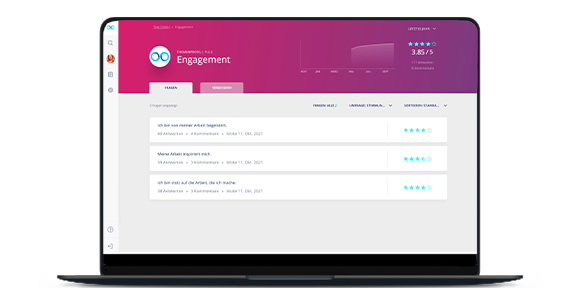
How to recognize a toxic work environment
06.02.2023
Toxic work cultures are the No. 1 reason for quitting, closely followed by salary, poor management and an unhealthy work-life balance. That's according to a recent study on the topic.
What defines a toxic work environment?
A workplace is considered toxic primarily when there is an increase in unhealthy or disruptive behaviours. In a very advanced form, we are talking about bullying, harassment or discrimination. But we are also talking about extreme stress and a high level of competitiveness within one's own ranks. This type of work environment can lead to burnout symptoms and low motivation among employees. In the long term, this is also associated with a high turnover rate, which in turn is reflected in a poor reputation for the company.
What are the classic signs of a toxic work environment?
Especially at the beginning of a new employment, signs of a toxic environment get lost in the excitement. Yet, it is precisely the probationary period, usually the first six months, that should be used to get a good picture of the employer and to check whether you can see yourself working for the company in the long term. And it's often the subtle things that speak volumes.
The flow of meetings
What do your colleagues gestures and facial expressions during meetings say? Does a constructive exchange take place? Or do lively after-meetings take place within smaller groups? These are all important factors that tell you a lot about the corporate culture. In the best case, all participants in a meeting - both online and in person - are involved and focused on the matter at hand and contribute accordingly. Where it makes sense, a discourse takes place. Alternatively, topics are discussed further in the respective teams so that the meeting is not dragged out and the time of the other colleagues is respected.
Dealing with each other
In the worst case of a toxic work environment, employees encounter bullying and discrimination. That is, colleagues or supervisors behave in an assaultive manner and express themselves in a racist, sexist or homophobic way. Even wrapping it in a joke does not make up for such behaviour.
Workload and deadlines
Take a look around. Do you observe a disproportionate amount of stress in the form of heavy workloads and tight deadlines? Do colleagues support each other, or are elbows out? Long hours and sending late emails are also clear indicators that the workload is too high and, accordingly, overtime has already become the norm. When these patterns continue for weeks and months, instead of a peak over a limited time, there are no more excuses. Very clear case of toxic work environment.
Communication and transparency
Managers who share their knowledge within the team and promote their talents accordingly - we love. Teams that openly exchange information and thus push each other even more! But if instead knowledge is hoarded in order to make oneself irreplaceable - this is poison for the working atmosphere. As a consequence, a lack of trust among each other can often be observed, which in turn not only hinders efficient goal achievement, but makes it virtually impossible.
Recognition and appreciation
Employees who actively contribute to the further development of the company and reliably perform well deserve appropriate recognition. If this does not happen, the motivation to keep the performance curve high also decreases. Instead, frustration and fluctuation within the company increase. That's why it's worth monitoring: When a team reaches a milestone - does the team lead take credit? Or are the individual members valued for their respective contributions? Important difference!
What to do when you find yourself in a toxic work environment?
The first thing to do is to stay calm and grab a piece of paper and pen. Write down which toxic patterns you have repeatedly observed in the company and, in the best case, also add specific situations. The following points can follow in any order:
- Clarify your boundaries: set your own personal boundaries for inappropriate behaviour and communicate them clearly.
- Seek support: Talk to colleagues, friends or another point of contact about your experience.
- Report the problem: Contact your supervisor or HR manager and ask for a solution.
- Mentally prepare for alternatives: If not at this company - or on this team - where do you see yourself instead?
- Prioritize your health: take back your time. Get out of work on time and reorganize your time based on your personal preferences. The classics: meeting friends & family, exercising, eating well, getting enough sleep.
If you are in a management position or the HR department, you naturally have the scepter in your hand. First things first: create awareness for the issue within your own ranks and set a good example. A few specific approaches:
- Do not reward overtime, but instead question the workload and prioritize tasks.
- Respond to emails outside of working hours with a wink of the eye, for example "Good input - happy to receive within working hours in the future". When in doubt, have a short face-to-face exchange.
- Share your own knowledge with the team and also encourage a lively exchange of knowledge between the different teams. For example, with a monthly calendar entry in which one department presents its best practices.
The final step?
As announced in the introduction: If nothing works, it's time to say goodbye. To ensure a smooth transition for your colleagues, there are a few important points to keep in mind.
- Give notice early: Announce as early as possible that you plan to leave the company. This gives the company time to find a replacement.
- Prepare a professional handover. This includes documenting all credentials and platforms, important deadlines and upcoming events.
- It never hurts to stay in touch. Who knows when you'll meet again and what other opportunities may arise.




